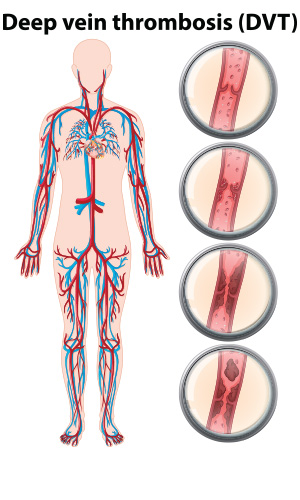Get Easy Health Digest™ in your inbox and don’t miss a thing when you subscribe today. Plus, get the free bonus report, Mother Nature’s Tips, Tricks and Remedies for Cholesterol, Blood Pressure & Blood Sugar as my way of saying welcome to the community!
6 ways to tackle the serious side of varicose veins

Varicose veins signal blood clot trouble
A new study from researchers at Chang Gung Memorial Hospital in Taiwan found that varicose veins — something most people think of as a mere annoyance — significantly increase your risk for dangerous blood clots.
The study included data from more than 425,000 people. Half of these people had varicose veins, and those who did had 5.3 times higher risk of developing deep vein thrombosis (DVT).
If you’re not familiar with it, deep vein thrombosis is a blood clot that forms in veins deep within your body. Typically, it occurs in your legs and causes symptoms like leg swelling, pain, red or discolored skin, or a feeling of warmth in the affected leg. Sometimes, however, it doesn’t cause any symptoms.
Deep vein thrombosis is dangerous because the blood clot that develops in your leg can travel to other parts of your body. It can even cause something called a pulmonary embolism, where the clot gets lodged in your lungs and prevents you from breathing. And that can be deadly.
So now you may have forgotten all about your seasonal struggle with shorts — you’ve got blood clots on the brain. But don’t let this latest information about blood clots stress you out. Instead, let it inspire you to tackle those varicose veins and lower your blood clot risk. Here are six natural ways you can do that:












